Results
-
 £367.99
£367.99Adventures on Earth ( from E.T. ) - John Williams
Dynamic suite for concert band from the landmark Steven Spielberg classic film! Performance time - ca. 10:00
Estimated dispatch 7-14 working days
-
 £134.99
£134.99The Legend of Ratu Kidul - Filip Ceunen
The Legend of Ratu Kidul carries us into the world of Indonesian mythology, on the island of Java:Once upon a time, the Queen of the Southern Seas was a kind and beautiful princess. She was the daughter of Prabu Munding Wangi, the favourite ofthe entire court and the local people. Her royal father doted on his daughter. Her name was Dewi Kadita, but many called her Dewi Srengenge or the Angry Princess.Prabu Munding Wangi longed for an heir, but Dewi Kadita's mother couldn't fulfil thiswish. So he took a second wife, called Poetri Moentiara, who was very jealous of the lovely princess and her mother. She begged the king to banish both her rivals from court. However Prabu Munding Wangi didn't do as she asked. He loved his first wifeand her daughter. The second wife bore him a healthy heir, but the monarch remained firm. So Poetri Moentiara called upon the renowned witch, Djahil. She promised her a princely reward, if Dewi Kandita and her mother were banished. Djahil thought fora moment and incanted this rapal (spell): "May leprosy befall you both". Soon both mother and daughter began to suffer this dreadful disease. According to the law of the land, they were to be banished to the wild forest high on the mountain. With aheavy heart, King Munding Wangi saw the law carried out. So the two set off on their way to the forest, covered in terrible sores. A great sadness fell across the land, except for Poetri Moentiara, the second wife of the king, who had achieved heraim. The princess fell on hard times. In the forest lived a hermit, who took pity on the mother and daughter. The queen couldn't bear the shame and within a few days had died. Now Dewi Kandita was all alone in the world. There was still the hermit,however, who fortunately provided food and shelter in a cave temple. He bound her weeping sores but couldn't relieve her emotional pain. Dewi Kandita became increasingly bitter and eventually left the hermit. She travelled southward from village tovillage, further and further, until eventually she reached the shores of the Southern Sea. She climbed upon a high cliff and gazed out onto the sea that spread before her. She was tempted to dive into the deep green and blue. In the cool waters shewould be able to forget all her pain and suffering. Suddenly awaking from these thoughts, she jumped into the deep. The gods, who had looked on Dewi Kandita throughout her hardships, were filled with deep compassion. So they transformed her into apowerful spirit of the netherworld, Ratu Kidul, and to this day she resides in her grand palace under the sea.
Estimated dispatch 7-14 working days
-
 £76.99
£76.99Clockwork - Thomas Doss
In vivid, imaginative musical pictures Clockwork tells the story of a young girl who finds it hard to get up in the mornings: Every evening Barbara sets her alarm so that she doesn't sleep in and isn't late for school.Today, as usual, she cant make it, and lets her alarm ring again and again. She dozes off and dreams of lovely things - landscapes and stories - while time flies by and the clock continues to tick. As the big living room clock loudly strikes eight, however, she jumps up, startled - school has already begun! Now she'll be late again...
Estimated dispatch 7-14 working days
-
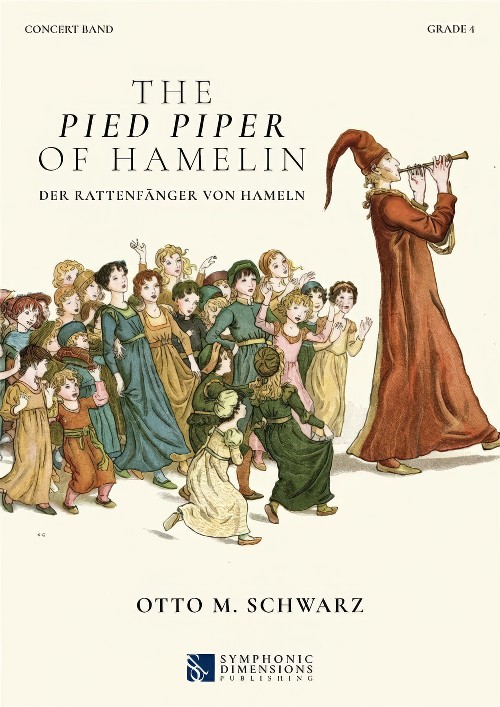 £163.99
£163.99The Pied Piper of Hamelin (Concert Band - Score and Parts) - Schwarz, Otto M.
Stories, sagas and legends--who among us don't know them? Always delivered with a tinge of brutality, these cautionary tales are a legacy of moral education from times past: inquisitive children alone in the forest are generally eaten by a witch; the 'Soup-Kasper' of Hoffmann's Struwwelpeter dies from starvation rather than eating his soup; anyone letting in strangers usually gets devoured; anyone who plays with matches gets burned; and thumb-suckers get their thumbs cut off. The list of unfortunate demises is almost endless.In the tale of The Pied Piper of Hamelin, parents lose their children through greed, ridicule, scorn and a failure to appreciate art. There is still a street in the town of Hamelin in which neither drumming nor playing has not been allowed since 130 children disappeared into a mountain, never to be seen again. This composition by Otto M. Schwarz opens with exactly this scene, taking us back to the year 1284. As in many towns at the time, Hamelin in Germany suffered with hygiene problems--rats and mice began to multiply rapidly, and the town was overrun with the plague. There appeared a man dressed in colourful clothes who promised the locals to free them from this burden. They agreed and settled on a fee. Then the man pulled out a pipe and began to play. When the rats and mice heard this, they followed him. He led the animals into the Weser River, where they all drowned. Back in town, the people refused to pay him. They didn't recognise this man's skills and knowledge and were only prepared to pay for simple labour. A pact with the devil was made, which led to the Pied Piper leaving the town in a furious rage. One Sunday, when many people were at church, he returned, took out his flute and began to play. The town's children were so enchanted by his playing that they followed him. He led them out of the town and disappeared with them forever into a mountain forever. Of all the children, only two survived--however one was mute, and one was blind. In the street from which the children left Hamelin, music may no longer be played in memory of this event. The work may be performed in two different versions: 1. Purely instrumental (without narrator)--the GPs (pauses) must be kept short 2. With narrator--he speaks in the GPs but not during the music.Duration: 14.15
Estimated dispatch 7-14 working days
-
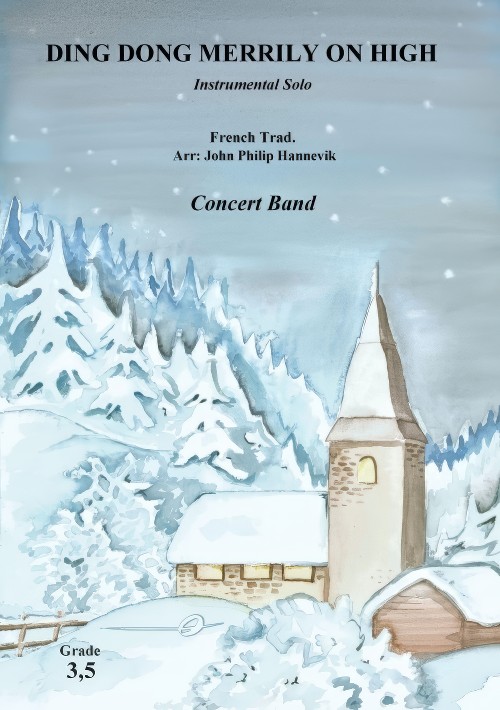 £91.00
£91.00Ding Dong Merrily on High (Vocal or Flexible Instrumental Solo with Concert Band - Score and Parts) - Hannevik, John Philip
This well know Christmas Carol has a French tune from the 16th century dance book Orch?sographie, written by Jehan Tabourot. The original title is "Le branle de l'Official". The lyrics were written by Englishman George Ratcliffe Woodward in 1924. Woodward took an interest in church bell ringing, which is easy to hear in his lyrics, and the arrangement also tries to portray this. The song is unusual in that the verse is sung in an old-style English, while the chorus is in latin, with it's signature melisma on the word "Gloria". Solo Options: Solo C (T.C.), Solo C (B.C.), Solo Bb (T.C.), Solo Bb (B.C.), Solo Eb or Solo F. Duration: 2.15
Estimated dispatch 7-14 working days
-
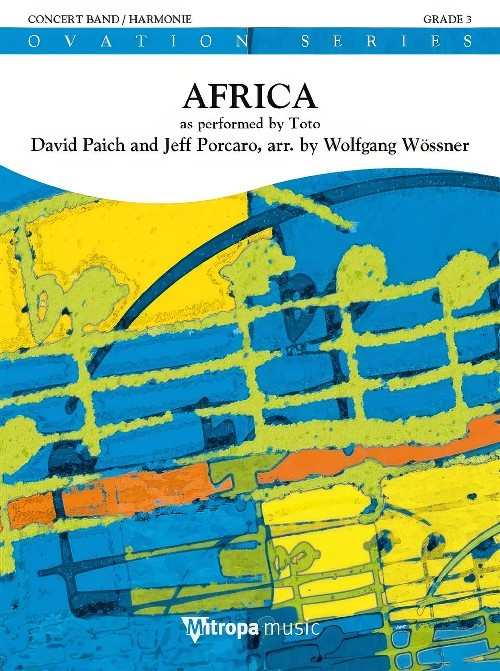 £84.99
£84.99Africa (Concert Band - Score and Parts) - Paich & Porcaro - Wossner, Wolfgang
Rock band Toto hadn't even planned to release Africa on their fourth LP Toto IV - work on the album was meant to have finished by the time that they started writing the song, and they initially considered it to be an afterthought that didn't fit on the record. Luckily, they changed their minds, and it went on to become a huge international hit and one of their best-known songs! Enjoy playing this great grade 3 arrangement by Wolfgang W?ssner. Duration: 4.00
Estimated dispatch 7-14 working days
-
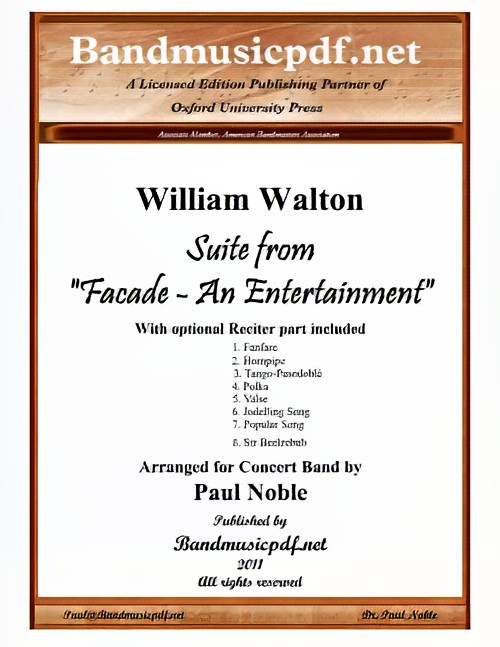 £375.00
£375.00Facade - An Entertainment, Suite from (Concert Band with Optional Narrator - Score and Parts) - Walton, William - Noble, Paul
This Suite from Facade - An Entertainment, composed by William Walton, with poems by Dame Edith Sitwell, presents for the first time a grouping of movements selected and arranged by Paul Noble for Concert Band and optional Reciter. The original composition was written between 1921 and 1928, containing forty-three numbers. They had their origin in a new style of poetry that Edith Sitwell evolved in the early 1920s, poems that her brother Osbert later described as 'experiments in obtaining through the medium of words the rhythm and dance measures such as waltzes, polkas, foxtrots... Some of the resulting poems were sad and serious... Others were mocking and gay... All possessed a quite extraordinary and haunting fascination.' Possibly influenced by the dance references in some of the numbers, Osbert declared that the poems might be further enhanced if spoken to a musical accompaniment. The obvious choice of composer was the young man who lived and worked in an attic room of the Sitwell brothers' house in Carlyle Square W[illiam] T[urner] Walton, as he then styled himself. The now historic first performance of the Facade Entertainment took place in an L-shaped first-floor drawing-room on January 24, 1922. Accompaniments to sixteen poems and two short musical numbers were performed by an ensemble of five players. The performers were obscured from the audience by a decorated front curtain, through which a megaphone protruded for Edith to declaim her poems. This was, as she put it, 'to deprive the work of any personal quality'. The first public performance of Facade was given at the Aeolian Hall on June 12, 1923. By now, fourteen poems had been set, others revised or rejected, and an alto saxophone added to the ensemble. The occasion gave rise to widespread publicity, both pro and contra, and the name of the twenty-one year old W. T. Walton was truly launched. In the ensuing years the Facade has gone through revisions and additions, with full orchestral arrangements of selected movements being made without the Reciter. Former Band Director Robert O'Brien arranged some movements for band, again without Reciter, which are now out of print. So this 'history making' addition is the first opportunity for Concert Bands to present some movements of Facade with poems as originally intended. The luxury of electronic amplification allows the full ensemble to perform without necessarily overshadowing the Reciter. And the arrangements are written with considerable doubling so that the ensemble may play in full, or reduced in size as may be desired for proper balance. And, though not encouraged, the arrangements are written so that the band can perform the music without the Reciter. Program notes are adapted in part from those written by David Lloyd-Jones and published by Oxford University Press in the Study Score of William Walton's Facade Entertainments.
Estimated dispatch 7-14 working days
-
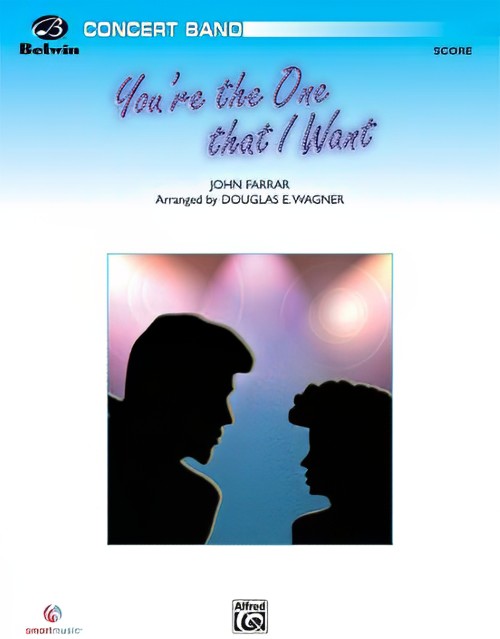 £58.50
£58.50You're the One That I Want (Concert Band - Score and Parts) - Farrar, John - Wagner, Douglas E.
Even if you didn't grow up in the heyday of Elvis and poodle skirts, you can't resist being drawn into the wild world of Rydell High's Class of 1959. Re-live the classic tale with this fast-paced, essentially 50s number. You're the One That I Want is also the title of NBC's mammoth casting call for a Broadway production of Grease in the Summer of 2007. Duration: 2.15
Estimated dispatch 7-14 working days
-
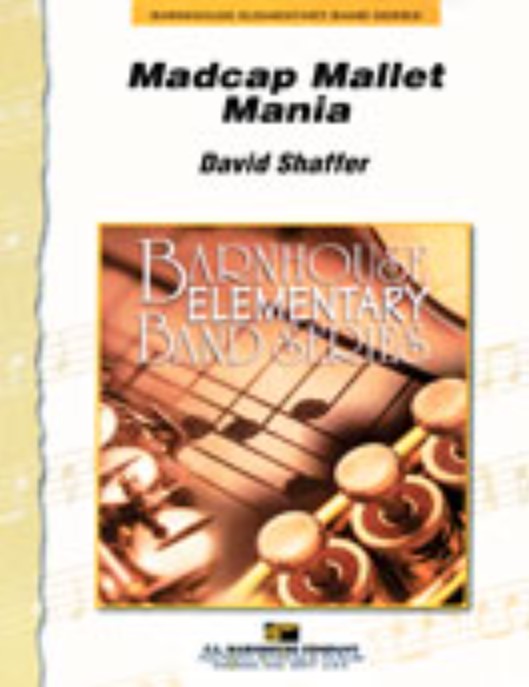 £50.00
£50.00Madcap Mallet Mania (Mallet Percussion Feature with Concert Band - Score and Parts) - Shaffer, David
Feature your aspiring mallet percussion players with this cute rock tune. Can be performed as a solo, a duet or a trio and you can even double those parts to make sure everyone gets involved in the action and any mallets instruments will work. Mallet parts aren't very hard but sound very impressive. Will pay big dividends to your band program. Can't be beat!Duration: 2.00
Estimated dispatch 7-14 working days
-
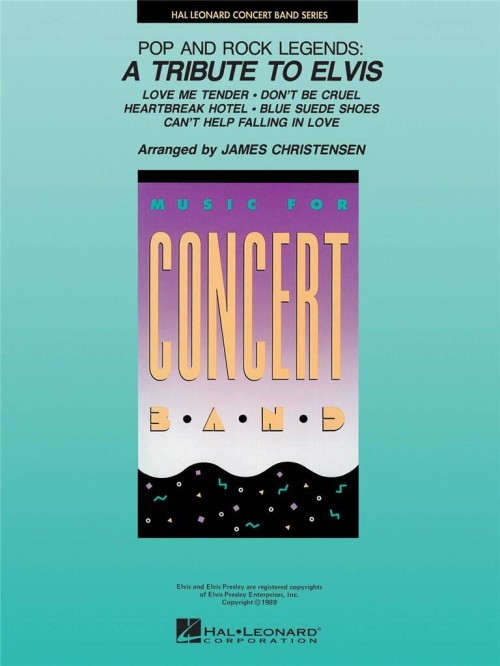 £76.99
£76.99Pop and Rock Legends: A Tribute to Elvis (Concert Band - Score and Parts) - Christensen, James
Includes:Love Me TenderBlue Suede ShoesHeartbreak HotelDon't Be CruelCan't Help Falling in Love
Estimated dispatch 7-14 working days
